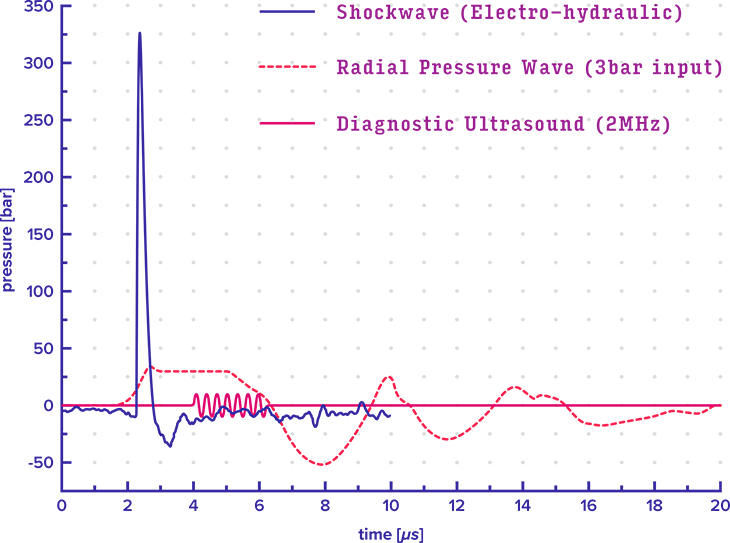



Shockwave
The Science of Shockwave®
Shockwaves are acoustic waves that travel through the body at supersonic velocity. The physical force of Shockwave causes shedding of micro-vesicles from cell membranes without harming the cells.
These micro-vesicles contain nucleic acids as well as proteins and other molecules that activate neighbouring cells—initiating intrinsic healing and repair mechanisms.
These mechanisms include the release of angiogenic growth factors, which leads to to vessel sprouting (angiogenesis) and the activation of stem cells, which in turn causes new vessel formation (vasculogenesis). At the same time, an increase of the metabolic activity of cells, proliferation and a positive, modulating effect on inflammation can be observed.
Shockwave initiates communication with and among cells, activating an intrinsic repair program within the tissue. This revolutionary cellular communication is the key to Shockwave’s unique medical efficacy without any relevant side effects.
At the core of Shockwave technology is a high energy discharge that promotes regeneration at the cellular level to kickstart repair of tendons, bones and other soft tissues resulting in the activation of healing. Results vary depending on each individual, but success rates are high and many patients see immediate improvement.
Shockwave is a regenerative therapeutic technology unlike any other. Imagine what it can do for your practice—and for your clients.
Types of Shockwave Generators:
Electro-hydraulic Shockwave
The oldest principle used in medicine is that in which the shockwaves are generated by a spark plug, the electro-hydraulic principle. The shock waves propagate in a medium (water) and are also focused in one place by a parabolic mirror.
Electromagnetic Shockwave
In electromagnetic shockwave generation the shock wave is emitted by a flat coil or a cylindrical coil by electrical pulses. In the flat coil a membrane is deflected which compresses a medium (water). The pulse is focused by means of an acoustic lens. In the cylindrical coil the shock wave is focused by a reflector.
Piezoelectric Shockwave
The piezoelectric principle is based on a focusing of pressure waves, which is produced by the electrical activation of piezoelectric crystals. The piezoelectric crystals are mounted in a shell in such a way that the pressure waves of each crystal meet in a focus.
Radial Pressure Wave
The generation of radial pressure waves is generated by the collision of a projectile accelerated by compressed air or electromagnetic induction on an impact body (applicator). Most of the energy is transferred as a pressure wave into the adjacent medium. The wave propagates radially from the applicator, with the square of the distance the energy decreases.
Comparison of 3 Acoustic Waves

Source:
MTS Europe GmbH, measurement Orthogold100, focused applicator
Diagnostic Ultrasound: Sine wave, calculated with 1 Mpa peak pressure at 2 MHz
Radical Pressure Wave: R.O. Cleveland, P.V. Chitnis, and S.R. McClure, Acoustic field of a ballistic shock wave therapy device. Ultrasound Med Biol., 33(8): 1327-1335, 2007, Fig. 6a
